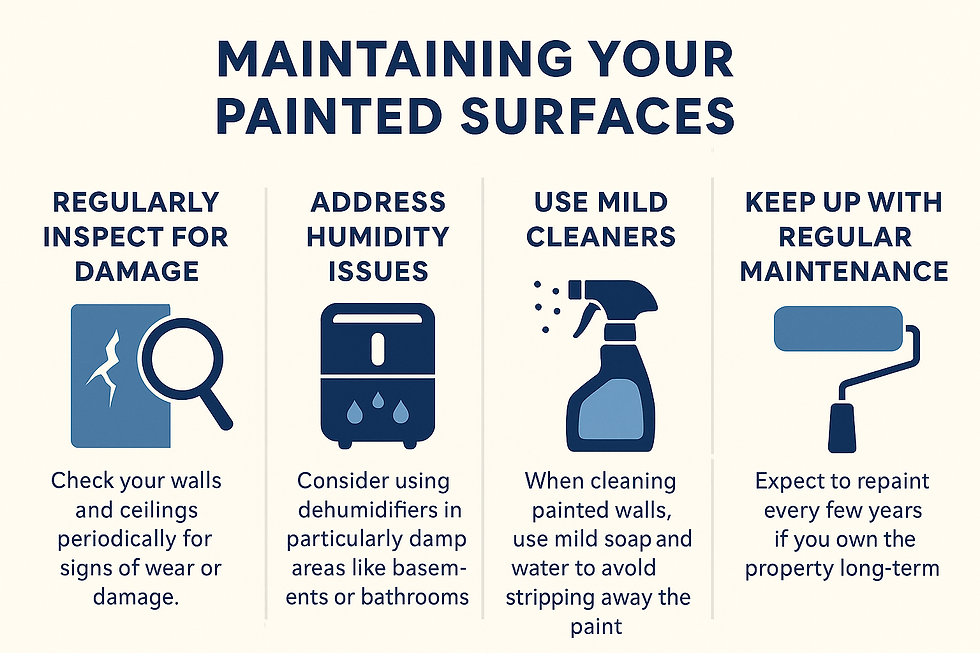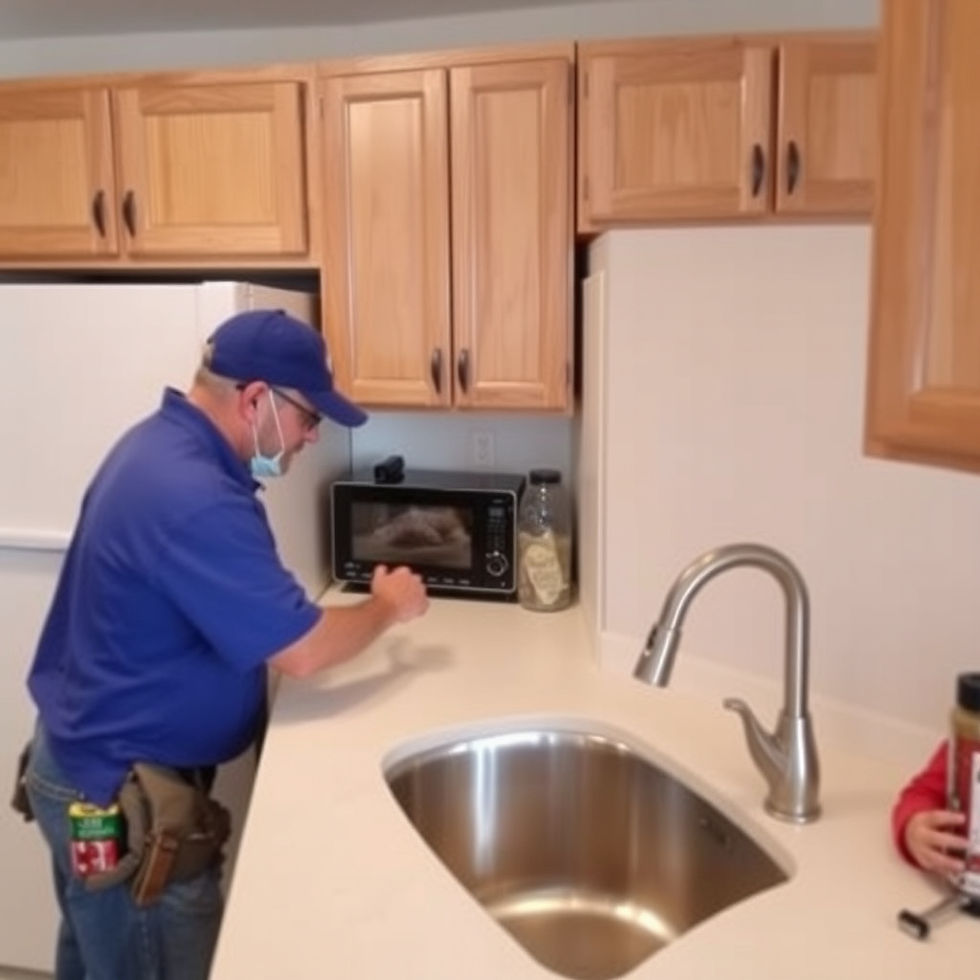Why Paint May Bubble and How to Prevent It
- Staff Desk
- May 13
- 4 min read
Updated: Oct 24

Paint plays a vital role in home improvement. Whether you're refreshing old walls or applying a new layer, achieving a perfect finish is the goal. Nonetheless, a frequent problem that homeowners encounter is paint bubbling. This unattractive issue can ruin your hard work, but by understanding its causes and prevention techniques, you can ensure a smooth and durable paint job.
Paint can bubble because of inadequate surface preparation (such as dirt, grease, or moisture), painting in humid or hot conditions, or incorrect application methods like applying too many thick coats or stirring the paint too vigorously. To avoid bubbling, ensure surfaces are thoroughly cleaned and dried, use the appropriate primer, apply paint in thin layers with adequate drying time, use high-quality tools, and paint in mild weather with low humidity.
Common Paint Issues
Before we delve into the specifics of paint bubbling, it helps to understand other related paint issues that many face. Paint can blister, peel, fade, or crack, with each of these problems often rooted in similar underlying causes. Environmental factors, application method, and surface preparation play pivotal roles.
For example, if you paint during high humidity or during extreme temperature fluctuations, you’re more likely to encounter problems. A study found that 30% of painters reported that poor weather conditions affected the quality of their jobs. Additionally, insufficient surface preparation can lead to a lack of adhesion and other complications.

Understanding the different issues can assist you in recognizing and fixing them early. Now, let's focus on the phenomenon of paint bubbling.
What Causes Paint Bubbling?
Paint bubbling is essentially small blisters or bubbles that appear beneath the paint surface. When you first notice them, it may feel like your paint is failing, but what causes these bubbles? Here are some common culprits:
Moisture: This is the most common reason for paint bubbling. If you paint over a damp surface or in high humidity, moisture can become trapped beneath the paint layer, leading to bubbling. According to the American Coatings Association, about 70% of paint failures are moisture-related.
Poor Surface Preparation: If the surface wasn’t cleaned or primed properly before painting, it can affect adhesion. Dust, grease, or existing paint not in good condition can cause bubbles to form.
Rapid Drying: If you paint in overly hot conditions or under direct sunlight, the surface may dry too quickly. This can trap solvents and lead to bubbles forming in the paint.
Use of Low-Quality Paint: Sometimes, the paint itself contains poor-quality ingredients that are prone to bubbling, particularly when exposed to moisture.
Incompatible Products: If you’re applying a new layer of paint over a different type (e.g., oil-based over latex), it can lead to bubbling if the ingredients don’t bond well.

Being aware of these causes can help prevent the issue before it arises.
Does Paint Bubbling Mean Water Damage?
It’s essential to know that while paint bubbling can indicate moisture issues, it doesn’t automatically mean there’s significant water damage. Sometimes, paint bubbles are the result of surface preparation problems rather than a true indication of a water leak.
However, if bubbling occurs on interior walls, especially near pipes or in bathrooms, it's prudent to investigate further. Look for signs of mold, peeling paint, or water stains. Regularly checking for water damage saves you from extensive repairs down the road.
If you suspect that bubbling is due to water issues, consider consulting a professional. They can assess whether the bubbling indicates a more serious problem.

How to Prevent Paint Bubbling
Now that we understand the causes, let's explore practical prevention steps to avoid paint bubbling in your next project:
Prepare the Surface Properly: Always clean the surface before applying paint to ensure there is no dust, grease, or moisture. Use a high-quality primer if necessary, as it aids in adhesion and creates a seal against moisture.
Choose the Right Paint: Opt for a good quality paint that is suitable for the intended surface and environment. Discuss with your paint supplier to find the ideal product for your project.
Check Weather Conditions: Avoid painting in high humidity or extreme temperatures. Ideal temperatures are usually between 50°F and 85°F. Always check the weather forecast prior to painting.
Control Moisture: If you suspect your walls are damp, address the cause first—this may involve fixing leaks, using dehumidifiers, or improving ventilation.
Go for Thin Coats: Apply paint in thin, even coats rather than thick layers. This allows for better drying and reduces the chance of bubbles forming.
Follow Manufacturer Instructions: Always adhere to the application directions provided by the paint manufacturer. This includes recommendations about stirring, application methods, and drying times.
By following these steps, you can significantly reduce the likelihood of paint bubbling.
What to Do If Bubbles Appear
If you already have bubbles forming on your walls, don't panic! There are steps you can take to remedy the situation:
Identify the Cause: Try to pinpoint whether moisture or preparation issues are causing the bubbling.
Fix Surface Issues: If the surface is the problem, you may need to scrape off the bubbling paint and sand the area down for a smooth finish. Make sure to clean the surface and repair any underlying issues.
Repaint with Caution: Once the area is prepared and free from moisture, repaint using the proper technique and conditions outlined above.
Monitor for Future Issues: After repainting, keep an eye on the painted surface. If more bubbling appears, it may indicate a more serious issue needing professional intervention.


Call to Action
Avoiding paint bubbling may seem tricky, but with careful planning and preparation, you can achieve a sleek, professional finish. If you find yourself encountering paint issues, consider reading more about paint bubbling and other common problems to stay informed and ready for your next project.
By understanding the causes and preventative measures of paint bubbling, you can enjoy your freshly painted walls for years to come. Happy painting!



Comments